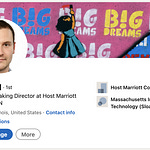Welcome to edition #98. So glad to have you. The last several newsletters have been moderate-to—lengthy essay type-things, so let’s make this one a links issue.
To the internet we go!
First, from CNBC: Amazon, TikTok and YouTube are investing in Shopping Network-like capabilities, hoping to capture the livestream wave that’s blown up in China. Some stats + context:
“Of Chinese consumers surveyed by Coresight Research, 74% said they had bought products through a shoppable livestream in 2022. In the U.S., 78% said they’d never even watched one.”
“People want to buy products with meaning or products that they can’t get anywhere else. And that’s really what’s the underpinning of live shopping in the U.S. That’s very different than in China, which is all about just a mass population,” said analyst Quyng Mai.
The CNBC story dropped just about the same time that Meta announced it was leaving the livestream shopping business on Instagram. So, still a long ways to go in the U.S., if it catches on at all. I’m curious if some other live + commerce + social thing takes off here.
Next, from VICE: perhaps unsurprisingly, some people are believing everything they see on TikTok. Not dissimilar to the experiences of older generations on Facebook. We’ve learned nothing!
But why TikTok? We’re consuming so much content, served at scale and personalized, and without any valuable kind of gatekeeping—we don’t have the added trust layer of media entities or journalists who have fact checked things. On TikTok, specifically, the For You page is meant to be an endless scroll without user scrutiny of the content.
I think context collapse—where several “different audiences occupy the same space, and a piece of information intended for one finds its way to another” thereby eliciting a completely different response—has a big part to do with it, too. This happens on Twitter all the time. But a joke-y TikTok meant for one audience can go viral, garner huge engagement to give it some semblance of credibility, only to find its way to another audience who views it with seriousness or shock and as truth.
Finally, I’ve been keeping on the “Do Not Disturb” train for several years. My specific use case had to do with the completely overwhelming notification system I had set up on my iPhone—at times, getting pings from hundreds of Twitter and Instagram accounts. (In hindsight, setting up notifications when any of a list of 300+ people tweeted was pretty twisted shit.)
I figured out it was better for my well-being to set my phone to DND so that I could open my notifications when I wanted, rather than glancing at the phone every time it dinged. If that meant replying a little late to some texts or group chat messages, it was worth it. I’m reclaiming my time!
at covered the growing DND phenomenon as a positive reaction to the larger consumption environment we're in:Society doesn’t actually just blindly follow the whims of technology. TikTok made everything short-form and threatened to “ruin” attention spans—and in response, people are actually leaning back into long-form content on YouTube. The constant texts, notifications, and other features on our phones that make us feel like we need to be overwhelmingly available at all times have instead led to people just … turning them off.
I think it was only recently that Apple showed a user if the person they were going to message had “Do Not Disturb” on. So, when it’s on, it does, by default, make it look like that person (me, I’m at the center of the world) doesn’t want to be messaged at all. My reality is just that I’d rather sometimes check my texts periodically rather than real-time. But have I been looking like an unreachable curmudgeon instead?
All that to say: keep texting me! Even if it takes me a bit to get back to you.
OK, that’s all for today! Love you!










